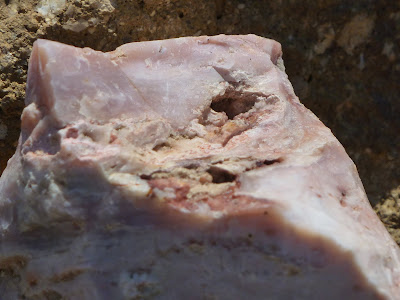 |
| Yellow Bells |
Peavine Mountain stands dominant over
northwest Reno.
The growing network of
hiking and
mountain biking trails between Reno's
Wilbur D. May Arboretum and Botanical Garden and the Peavine Peak area turns the hilly Peavine landscape into a popular and attractive
open space.
 |
| Open space: Peavine Mountain with clouds |
The large number of trail loops traversing sagebrush & desert peach slopes, steep canyons and scenic ridges provide plenty of spots and spaces to safely stay apart. On my many hikes in this area, I always experienced amazing
trail courtesy. Hikers stepping aside usually get their “Thank you. Enjoy your hike.” from passing mountain cyclists. So, during the warmer month, you want to watch out for those
coiled rattlesnakes before jumping off trail. These reptiles prefer
social distancing as well.
 |
| Mountain cyclists on Halo Trail |
In April, snow can still be widespread as you approach the upper terrain past the mahagony forest, while at lower elevation a diversity of wildflowers is waiting to be explored. Whether you are lazily walking
Keystone Canyon Trail, climbing
Poedunk Trail toward the
Snow Terraces, or go beyond on
Halo Trail,
Total Recall Trail,
Bacon Strip Trail and
Scrub Brush Trail, you will find common and less common plant species alongside the trails.
Here, a few snapshots of flowers seen on the dry slopes of the southeast side of Peavine Mountain in early April, 2020.
Beckwith's Violet
Sometimes written
Beckwith Violet and also known as the
Great Basin violet or
sagebrush pansy, this early-flowering plant shows two deep-purple upper petals, three pinkish-white lower petals and a brilliant yellow throat with light purple-maroon venation.
 |
| Beckwith's Violet |
Long-leaf Phlox
Long-leaf phlox, also
long-leaved phlox, typically grows in clusters of short plants. Look closely and you should make out some irregular or notched petals with a V-shaped indentation at the tip.
 |
| Long-leaf Phlox |
Dwarf Onion
The flowers of dwarf onion typically hug the ground. Each plant has two prostrate leaves that extend out beyond the flower. Note the two green leaves of the right plant being “cut off” by the bottom picture border.
 |
| Dwarf Onion |
Pursh's Milkvetch
Pursh's milkvetch, also known as
woollypod milkvetch, is a hairy plant with oval or rounded leaflets and pink-purple flowers preferring disturbed rocky soils. Typically, it grows in low mats. There are many varieties of
Astragalus purshii differing, among other characteristics, in flower color. The pink-to-purple flowers of the variety shown here feature interesting white patches on the banner (upper petal).
 |
| Pursh's Milkvetch |
Silver-hair-covered lupine
This beautiful silvery lupine is covered with satiny, silver hair. The flower raceme rises above leaves. White patches on the banner of the central flowers contribute to the enchanted appearance
of the silvery lupine.
 |
| Silvery Lupine |
Yellow bell
Also named
Yellow Fritillary, a yellow bell plant features one or two narrowly bell-shaped flowers hanging at the top of the flower stalk. As the flowers age, they turn rusty red (see left flower). Eventually, the petals begin to curl outward. A plant has two to eight fleshy narrow leaves.
 |
| Yellow Bell flowers. The left-side aging flower starts turning red. |


























